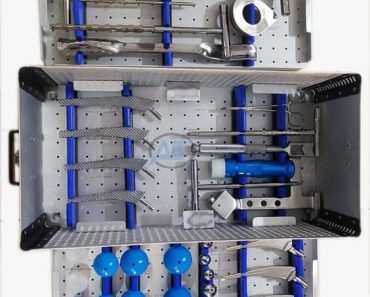In the dynamic landscape of modern technology, the LED screen industry stands out as a beacon of innovation and advancement. LED (Light Emitting Diode) screens have revolutionized how we interact with visual content, from enhancing our entertainment experiences to transforming business advertising and communication. As the demand for high-quality, energy-efficient, and versatile display solutions grows, the role of LED screen manufacturer becomes increasingly pivotal. This article delves into the intricacies of LED screen manufacturing, exploring the technology, the key players, the market dynamics, and the future trends shaping this vibrant industry.
Understanding LED Technology
LED technology, at its core, involves the use of light-emitting diodes to create bright, energy-efficient displays. These diodes are semiconductor devices that emit light when an electric current passes through them. The technology has evolved significantly since its inception, transitioning from simple indicator lights to sophisticated display systems capable of rendering high-definition video content.
Components of LED Screens
- LED Chips: The fundamental building block of an LED screen, these tiny chips are responsible for emitting light. Manufacturers source these chips from specialized providers, ensuring they meet specific quality and performance standards.
- Modules: An LED module is a small unit containing several LED chips. These modules are combined to form the larger screen. They are designed to be easily replaceable, ensuring maintenance and scalability.
- Driver ICs: Integrated circuits (ICs) that control the current flowing through the LED chips. They are crucial for managing brightness, color accuracy, and overall performance.
- Power Supply Units: These components convert and regulate the electrical power required for the LED screen to function efficiently.
- Control System: The brain of the LED screen, this system processes the input signals and coordinates the display of images and videos. It includes both hardware and software components.
Major Players in the LED Screen Manufacturing Industry
The LED screen manufacturing industry is highly competitive, with several key players leading the charge in innovation and quality. Here are some of the most prominent companies:
1. Samsung Electronics
Samsung is a global leader in technology and electronics, known for its high-quality LED screens. The company’s continuous investment in research and development ensures it remains at the forefront of the industry, offering cutting-edge display solutions for various applications, from consumer electronics to large-scale commercial displays.
2. LG Electronics
LG Electronics is another powerhouse in the LED screen manufacturing sector. With a focus on delivering superior picture quality and energy efficiency, LG’s products are widely used in televisions, digital signage, and professional displays.
3. Leyard Optoelectronic
Based in China, Leyard is a leading provider of visual solutions. The company specializes in designing, manufacturing, and selling LED displays, with a strong emphasis on innovation and customization. Leyard’s products are prominent in arenas, control rooms, and digital billboards worldwide.
4. Barco
Barco, a Belgian technology company, is renowned for its advanced LED display systems used in a variety of settings, including corporate offices, healthcare facilities, and entertainment venues. Barco’s commitment to quality and reliability has cemented its reputation in the industry.
5. Unilumin
Unilumin is one of China’s largest LED display manufacturers, known for its extensive range of products catering to both indoor and outdoor applications. The company’s focus on innovation and customer service has made it a preferred choice for many global clients.
The Manufacturing Process
The production of LED screens is a complex and meticulous process involving several stages, each critical to ensuring the final product’s quality and performance.
1. Design and Development
The manufacturing process begins with the design and development phase. Engineers and designers work together to create detailed blueprints of the LED screen, considering factors such as resolution, size, and application. This phase also involves selecting the appropriate materials and components.
2. Component Sourcing
Once the design is finalized, the next step is sourcing the necessary components. Manufacturers procure LED chips, driver ICs, power supply units, and other essential parts from reliable suppliers. Quality control is paramount during this stage to ensure that all components meet the required standards.
3. Assembly
The assembly phase involves mounting the LED chips onto the modules and integrating the driver ICs and other electronic components. This process requires precision and expertise, as even minor errors can affect the screen’s performance.
4. Calibration and Testing
After assembly, the LED screens undergo rigorous calibration and testing. This step ensures that the screens deliver optimal brightness, color accuracy, and uniformity. Advanced testing equipment and techniques are used to identify and rectify any defects.
5. Final Inspection
Before shipping, each LED screen undergoes a final inspection to ensure it meets all quality and performance specifications. This includes visual inspections, functional tests, and environmental tests to simulate real-world conditions.
Applications of LED Screens
LED screens are incredibly versatile, finding applications in various industries and environments. Here are some of the most common uses:
1. Advertising and Digital Signage
LED screens are widely used in advertising and digital signage due to their brightness, clarity, and ability to display dynamic content. They are commonly found in shopping malls, airports, and outdoor billboards, attracting attention and engaging audiences effectively.
2. Entertainment and Events
In the entertainment industry, LED screens play a crucial role in enhancing the visual experience. They are used in concert stages, sports arenas, and theaters to provide high-definition visuals and immersive experiences.
3. Corporate and Education
Corporate offices and educational institutions use LED screens for presentations, video conferencing, and digital displays. These screens facilitate effective communication and collaboration, making them essential tools in modern workplaces and classrooms.
4. Retail and Hospitality
Retail stores and hospitality venues use LED screens to create visually appealing environments and promote products and services. From digital menus in restaurants to interactive displays in stores, LED screens enhance customer engagement and drive sales.
5. Control Rooms and Command Centers
LED screens are integral to control rooms and command centers, where they provide real-time data and critical information. These screens are used in sectors such as transportation, utilities, and public safety, ensuring efficient monitoring and decision-making.
Market Dynamics and Trends
The LED screen manufacturing industry is influenced by various market dynamics and trends, shaping its growth and evolution.
1. Increasing Demand for High-Resolution Displays
As consumer expectations for visual quality continue to rise, there is a growing demand for high-resolution LED displays. Manufacturers are investing in developing screens with higher pixel densities, enabling sharper and more detailed images.
2. Energy Efficiency and Sustainability
With increasing awareness of environmental sustainability, LED screen manufacturers are focusing on energy-efficient solutions. Advances in LED technology have led to screens that consume less power while delivering brighter and more vibrant visuals.





